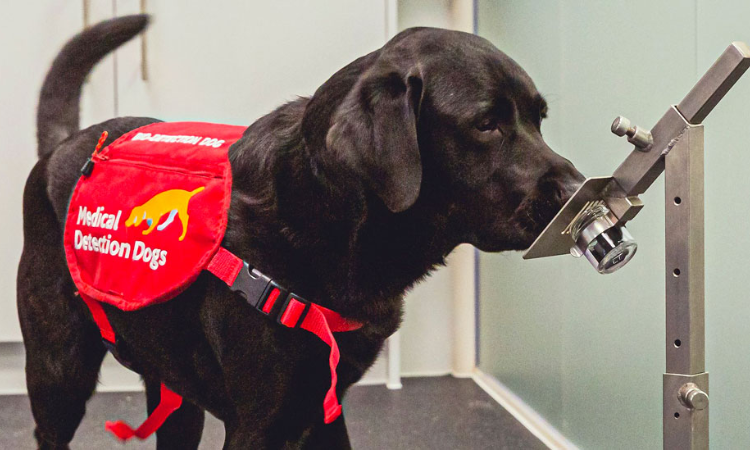Karachi: Real-time SARS-CoV-2 infection detection in dogs during an open air event showing high level of diagnostic accuracy
Due to their extraordinary sense of smell and ability to learn through behavior modification, dogs can be used for a variety of medical detection applications. The use of medical detection dogs is still in its infant stages compared to the well-established and recognised use of sniffer dogs by the authorities, military, and customs for substances like money, explosives, or drugs. Nevertheless, research on the ability of medical detection dogs to identify individuals with infectious or non-infectious diseases has been promising.
Prior to the deployment of canine scent detection dogs, a number of parameters need to be standardized. Different volatile organic compounds with varying intensities, levels of volatility, and concentrations make up each individual odor associated with an illness. Numerous factors, including genetics, the environment, age, hydration, diet, ecology, conditioning, training, and management issues, diseases, and medications, can have an impact on olfaction. The function and significance of canine olfaction are discussed in this article, along with its limits and the possibility of using dogs as biological detectors for both infectious and non-infectious disorders.
Previous studies showed that SARS-CoV-2 positive and negative samples could be distinguished with good diagnostic accuracy by medical smell detection dogs. It is essential to determine whether dogs maintain their high diagnostic accuracy in real screening settings before using them as a dependable screening approach. In order to determine how well medical smell detecting dogs function in actual situations, a short clinical study was conducted.
To detect SARS-CoV-2 RT-qPCR positive samples, eight dogs were trained. Four events with a total of 2802 attendees were organized to gauge how well dogs performed at recognizing SARS-CoV-2 infection. All participants’ sweat samples were gathered, and they were all lined up and displayed. Every participant also contributed details about their age, gender, vaccination status, and previous medical conditions in addition to having undergone screening with a SARS-CoV-2 specific rapid antigen test and an RT-qPCR. At the moment of the canine testing, it was uncertain whether the volunteers were affected. Precautionary measures like mask use and maintaining a safe distance were taken.
The diagnostic accuracy and sensitivity of the SARS-CoV-2 detection dogs were 99.93% (95% CI 99.74% to 99.99%) and 81.58% (95% CI 66.58% to 90.78%), respectively. The proportion of findings that agreed overall was 99.68%. Whereas many participants in the research group had chronic medical conditions and were on long-term prescriptions, the majority of the individuals had undergone vaccinations using various vaccines and vaccination regimens but it had no impact on the dogs’ behaviors.
The results indicate that SARS-CoV-2 scent detection dogs have a high level of diagnostic accuracy in a practical environment. The participants’ immunization history, previous SARS-CoV-2 infection, chronic illness, or medication did not influence how well the dogs diagnosed the active infection. This indicates that dogs offer a quick and efficient screening option for occasions — demanding thorough screening




